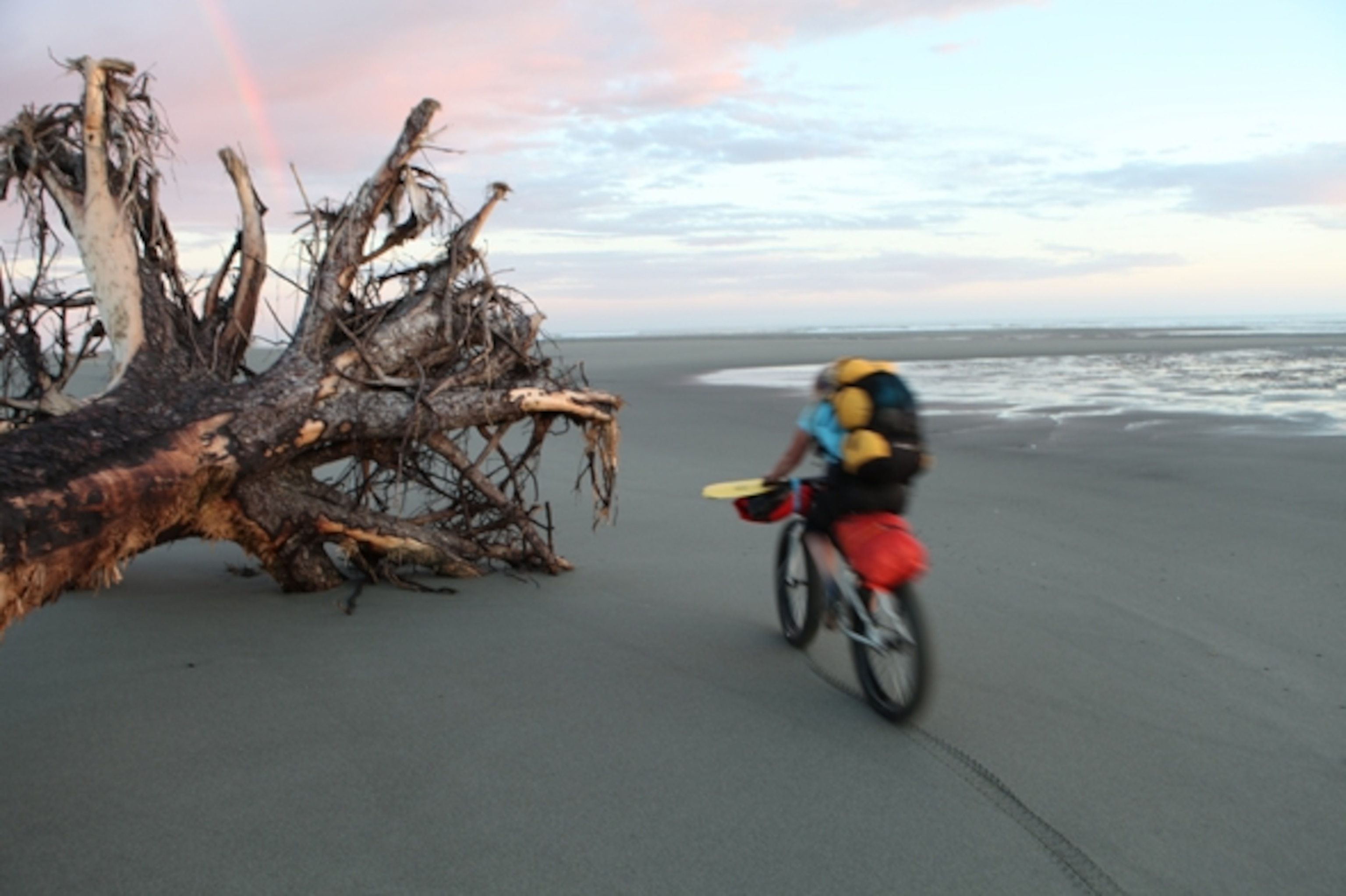
Alaska’s Lost Coast: Welcome to the Last Frontier
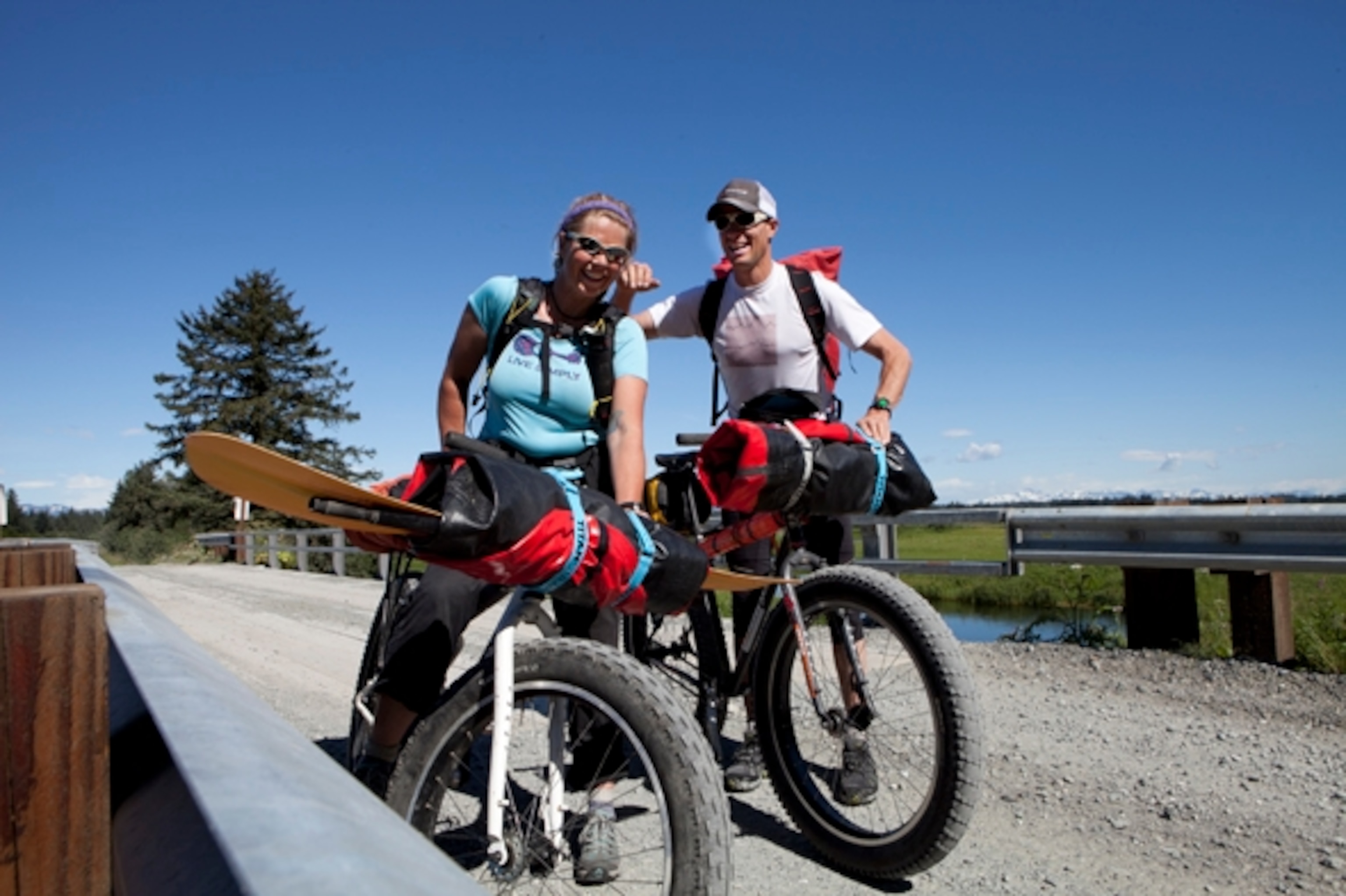
See Cameron Lawson’s previous dispatches on Alaska’s Lost Coast >>
A twinge of nervous energy flowed through my body as I entered the small, metal airport terminal in Yakutat in search of my companion for the Lost Coast expedition ahead. Amongst a dispersed crowd of tourists dressed in chic outdoor gear and a handful of locals, Iris was easy to pick out. A thick mop of blonde dreadlocks draped over her shoulders framing her tan face and piercing blue eyes.
“Hey Iris,” I said in a loud voice to catch her attention. Flashing a big grin, she responded with her Dutch accent, “Hey, how’s it going? You made it!” We approached each other, laughed, and then embraced with a big hug. Even though we had never met prior to this point, the hug was natural and seemed to represent our commitment for the journey ahead. With bubbling excitement, we chatted and got acquainted as we walked to Coastal Air Service’s shaded hangar to assemble our bikes and look over our gear with a critical eye, before hitting the road.
Stock mountain bikes won’t hack it for a trip like this. We chose Surly Pugsleys that look more like motocross dirt bikes without an engine. The fat, low-pressure tires are almost 4 inches wide and measure a whopping 29 inches in diameter, allowing us to glide over anything from mucky glacial silt to softball-sized rocks. Knowing the corrosive saltwater and sand would chew up our drive train, we used zinc-coated “Rustbuster” chains and turned our bikes into hassle-free, single speeds. After being fully assembled, our “bike tanks” were bombproof and impervious to the environment and the nastiest of riding conditions.
On a big trip like the Lost Coast, where countless rivers and bays must be crossed, the Alpacka raft is another piece of essential equipment. No bigger than a kid’s single mattress and weighing a scant 5 pounds 3oz., these miniature packrafts are a lifesaver, allowing us to cross bodies of water with relative ease.
Sometimes a water crossing is mandatory, other times the raft is used to save hours and hours of heinous bushwhacking in bear-infested country. With our backpacks stashed between our legs and the bikes strapped to the bow, we are ready for any body of water.
Within a couple hours, we are loaded up and pedaling our way to the coast under a canopy of warm Alaskan sunshine. It is 3 p.m., but at this latitude, we have hours of riding before the lazy sun dips below the Pacific.
The scent of spruce trees fill the air, as we travel down a dusty dirt road, leading to the beach and the beginning of our Lost Coast ride. Occasionally, cycle past soggy meadows that provide an opportunity to see jaw-dropping views of Mt. St. Elias, which tower above the stunted forest like an ice-plastered citadel.
Eventually, the bumpy washboard rolls smooth onto golden sand. Before us, the mighty Gulf of Alaska glitters and gentle, rolling waves crash on the beach. Giddy, we weave around sea-worn driftwood that litters the beach like jumbled Lincoln Logs. While watching tiny, fragile-looking sandpipers dance on the edge of the beach, the cry of Arctic terns fill the air. For two-wheeled travelers on fat-tires, we were rolling through paradise.
Few words are spoken, as Iris and I are absorbed in our own thoughts and the beauty around us. The warmth of the sun is cooled by a soft sea breeze, as I reflect on my apprehensions leading up to the trip. With each pedal stroke my worries disappear, replaced with a feeling of comfort. Things fall into place, and there is no other place I want to be.
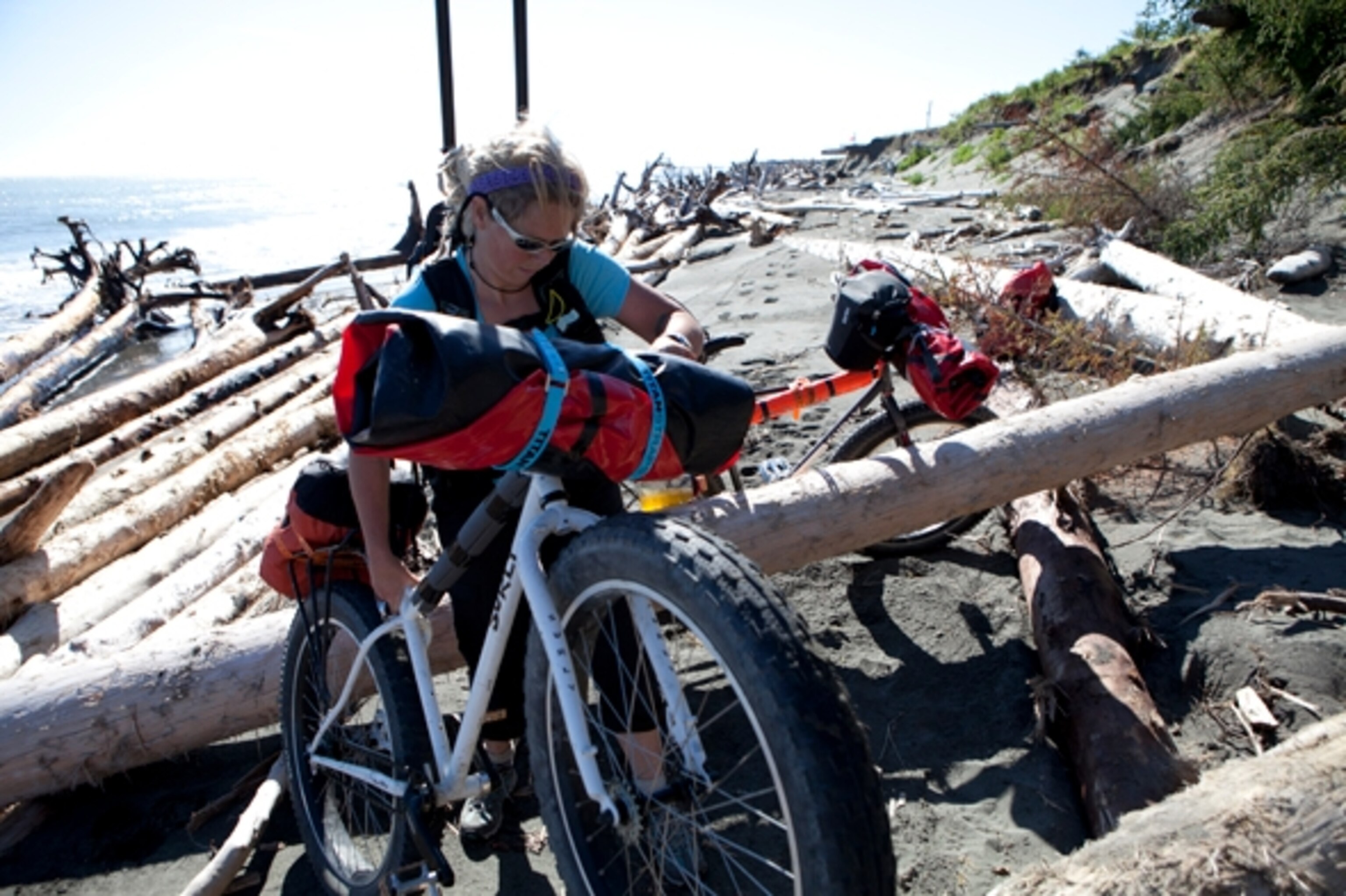
- National Geographic Expeditions
Arriving at Situk Lagoon, we explore the option of hugging the shoreline, but after thrashing through some impenetrable brush, it’s apparent that we need to blow up our Alpacka Rafts for our first water crossing.
Looking at our Xerox copy of the Yakutat tide table, we have a couple hours before we catch an incoming tide. It’s best to cross tide-effected water with an incoming flow because if there’s a mishap, you want to be flowing into the bay and not out to sea. But we’re eager to get to the to the other side and continue riding.
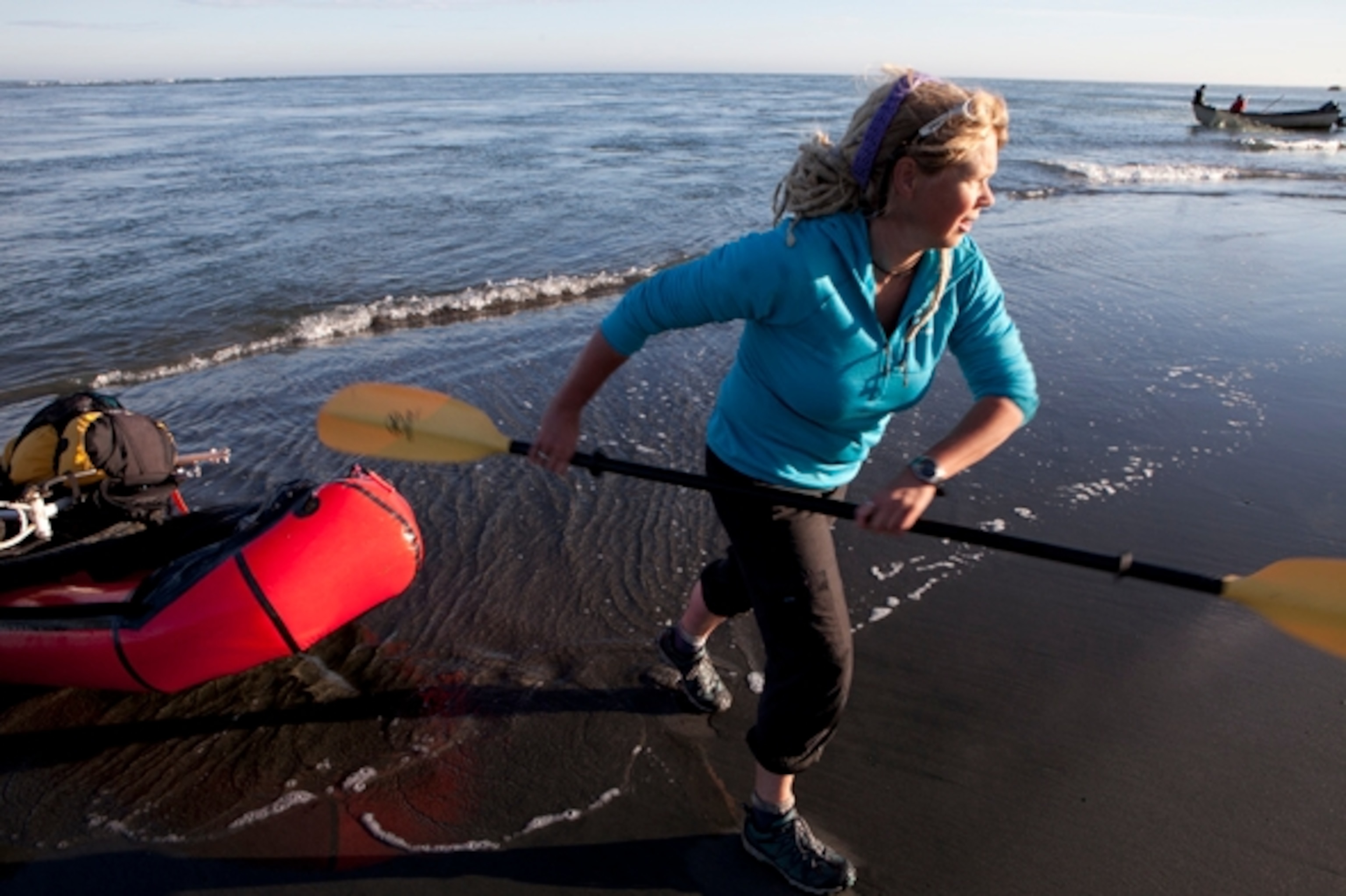
Not too afraid of being the guinea pig, I quickly inflate my raft and strap my bike to the bow. The current doesn’t look swift, so I hop in and start to ferring across with my bow pointing into the current. I pick a landmark to gauge my progress, which I quickly begin to lose. My underpowered paddling strokes are making no progress against the current. At this rate, I will be swept out to sea. I dig my blades in deeper and pull harder; I can make it to the other side. But the current sucks me towards the breaking surf at the mouth of the lagoon.
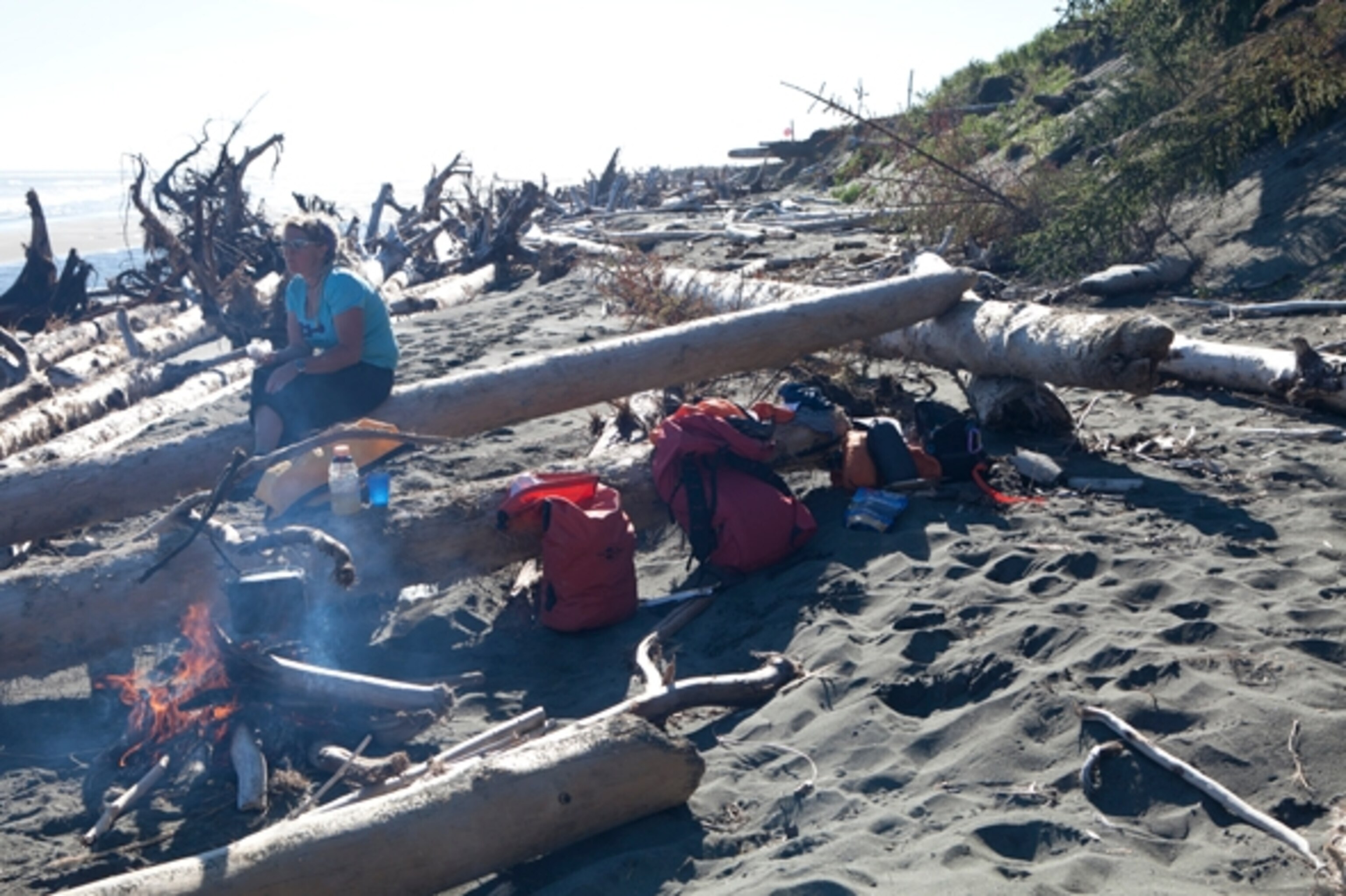
Almost halfway out, I give in and retreat to where Iris is standing, watching. The current is so strong I miss her 500 yards down beach. I’ve learned my lesson, trust the tide tables and always paddle on the incoming.
